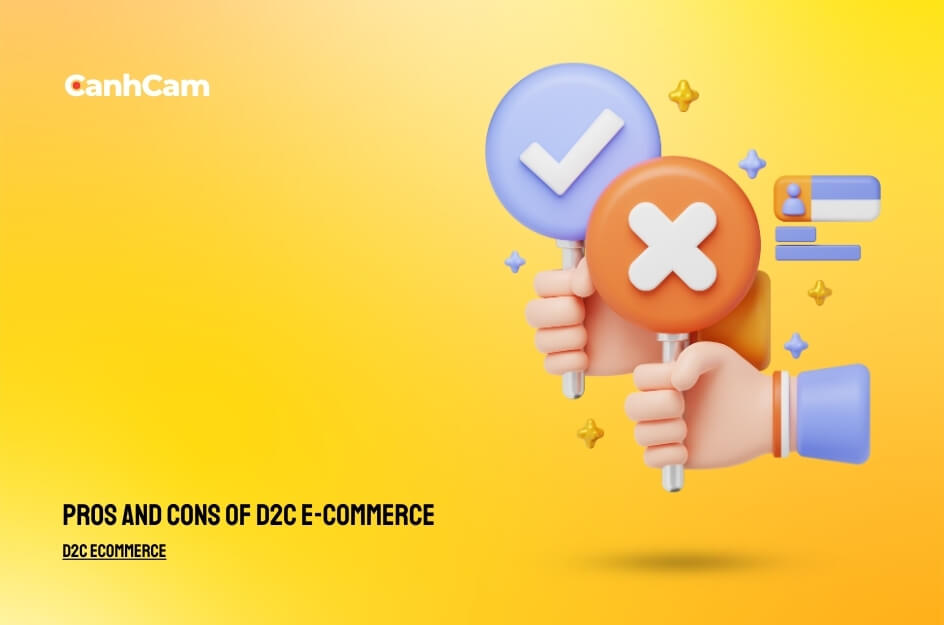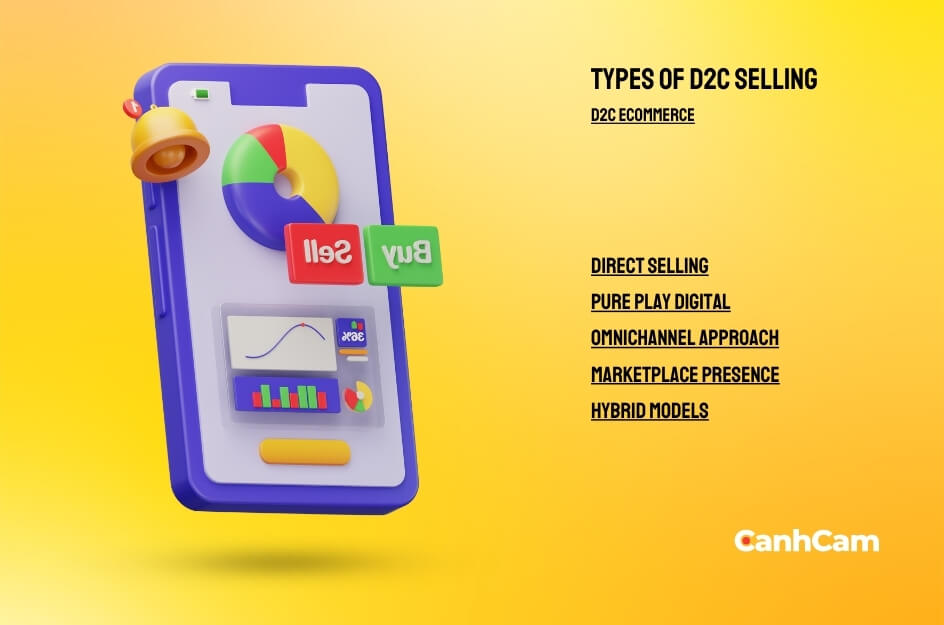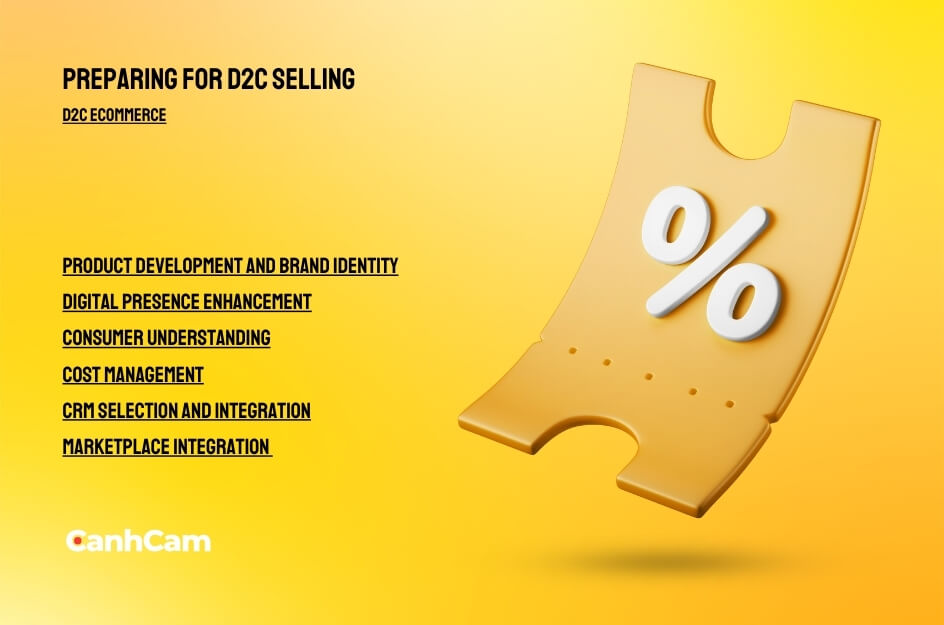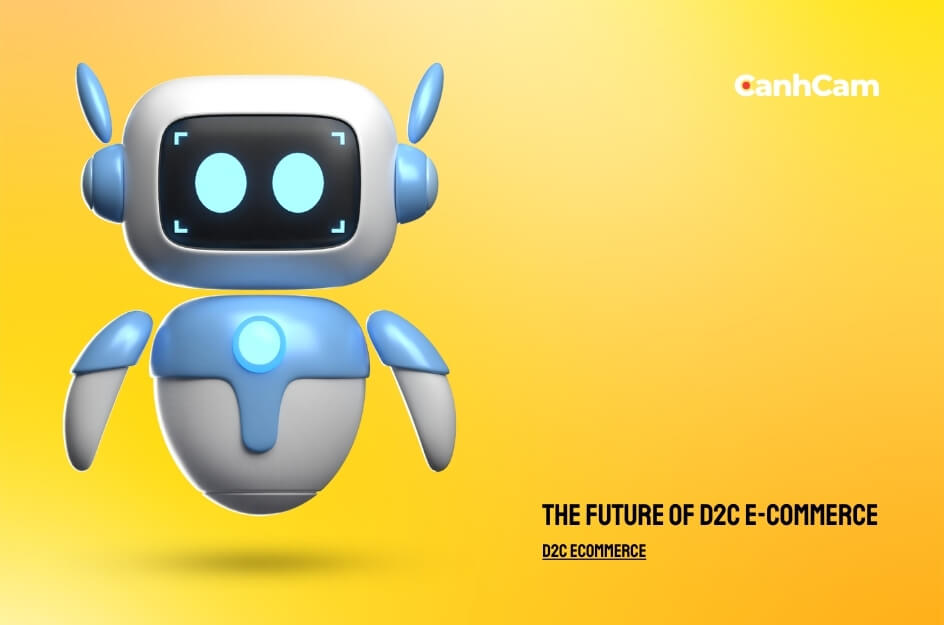When talking about online shopping, you probably think of big names like Walmart, Target, and Amazon. They control the market for a long while. But now everything is changing. Direct-to-consumer (D2C) online shopping has recently become more popular, changing the way people shop and their behaviour is complicated.
So, what exactly is D2C in Ecommerce? How is it different from traditional retail? Why should companies think about going this way?
In this article, we'll learn what D2C means and how you can launch or expand your D2C business. Let's get into it!
What is D2C Ecommerce?
D2C, short for Direct-to-Consumer commerce, is when brands sell their items directly to customers without third parties like middlemen, stores, or traditional retail, which helps them control prices and branding better.
This helps brands learn about customer buying journey, making it easier to give them personalized service, use super-focused online ads, and get data that helps with product and marketing choices.
Visit Our Service: Business Web Design Melbourne
D2C Business vs. Traditional Retailer
The big differences between D2C online shopping and regular retail come down to how they sell stuff and connect with customers. Traditional stores use middlemen to reach buyers, but D2C brands prefer dealing directly with shoppers.
| Feature | D2C Business | Traditional Retailer |
| Sales Channel | Direct to consumers (online store, app, social media) | Multiple channels (stores, online marketplaces, wholesale) |
| Brand Control | Full control over the message, experience, price | Less control due to retailer dependence |
| Customer Relationship | Direct relationship, data collection, personalization | Indirect relationship, limited data access |
| Profit Margin | Potentially higher (fewer middlemen) | Lower (brand awareness, online store, fulfillment) |
| Inventory Management | Manages own inventory and fulfilment | Relies on retailers for inventory and fulfillment |
| Marketing & Advertising | Invests heavily in digital marketing | Shared marketing efforts (brand & retailers) |
| Data & Analytics | Direct access to customer data | Limited data access (selling through retailers) |
Pros and Cons of D2C Ecommerce
Direct-to-consumer ecommerce presents a range of benefits for brands and customers alike. Let's delve into some key advantages and disadvantages:
Pros of D2C E-commerce
- Controlling Prices: One cool thing about D2C online selling is that brands can set their prices without any middlemen getting in the way. This means they have full control over how much things cost when they sell directly to customers.
- Owning Customer Data: D2C brands get to have all the customer data for themselves, which helps them build strong systems to manage relationships with customers. Having this data gives brands the power to personalize their marketing strategies and make customer experiences better.

- Managing Brand Image: When D2C brands interact with customers directly, they can keep a close eye on how people see their brand. By providing top-notch customer service and quickly solving any issues, brands can build a positive reputation and keep customers coming back for more.
- Flexible Marketing Strategies: With D2C online selling, brands have more freedom to try out different ways of reaching customers. Whether they're launching new products or testing out new marketing ideas, brands can easily adapt to changes in the market and what customers want.
- Building Customer Loyalty: By creating direct relationships with customers, D2C brands can make people feel more loyal to their brand. Through personalized communication and special offers, brands can create a sense of community and get customers to advocate for them.
Cons of D2C Ecommerce
While D2C ecommerce offers many benefits, it also poses several challenges that brands must navigate effectively. Let's explore some of the key challenges associated with this business model:
- Brand vision: Achieving visibility can be challenging for D2C brands, especially those involved in competitive industries. Building brand awareness and differentiating yourself from competitors requires a marketing strategy and investment in digital channels.
- Build Trust and Customer Service: Building trust is important for D2C brands, as consumers can be hesitant to buy online from unfamiliar companies. Providing transparent policies, responsive customer service, and quality products is essential to building trust and credibility.
- Efficient Order Fulfillment: Efficient order fulfilment is essential to delivering a positive customer experience in D2C e-commerce. Brands must optimize logistics and supply chains to ensure timely deliveries and minimize shipping costs.
Types of D2C Ecommerce Selling
D2C ecommerce encompasses various selling approaches, each with its advantages and considerations. Here are some common types of D2C selling models.
Direct Selling
Direct selling involves brands selling their products directly to consumers through their own online platforms or physical stores. This approach offers maximum control over the customer experience but requires significant investment in infrastructure and marketing.
Pure Play Digital
Pure Play digital brands operate exclusively online, leveraging digital channels such as ecommerce websites and social media platforms to reach consumers. This approach offers scalability and flexibility but requires a strong digital presence and marketing expertise.

Omnichannel Approach
An omnichannel approach combines online and offline channels to provide a seamless shopping experience for customers. By integrating brick-and-mortar stores with ecommerce platforms, brands can reach a wider audience and cater to diverse consumer preferences.
Marketplace Presence
Some D2C brands choose to sell their products through third-party online marketplaces such as Amazon or eBay. While this approach offers access to a large customer base, brands must compete with other sellers and adhere to marketplace rules and fees.
Hybrid Models
Hybrid models combine elements of direct selling, pure-play digital, and marketplace presence to maximize reach and flexibility. Brands adopting hybrid models can leverage the strengths of each approach while mitigating potential drawbacks.
Preparing for D2C Selling
Process Planning
Before venturing into D2C ecommerce, brands must carefully plan their processes and workflows. This includes identifying target markets, setting up logistics and fulfillment operations, and establishing customer service protocols.
Product Development and Brand Identity
Creating compelling products and defining a strong brand identity is essential for success in D2C e-commerce. Brands must conduct market research, develop innovative products, and craft a distinct brand voice and image to attract and retain customers.
Digital Presence Enhancement
A robust digital presence is critical for D2C brands to reach and engage with their target audience. This includes optimizing e-commerce websites for search engines, leveraging social media for marketing and customer service, and investing in online advertising.

Consumer Understanding
Understanding consumer behavior and preferences is key to effectively targeting and engaging with customers in D2C e-commerce. Brands should conduct market research, collect and analyze customer data, and use insights to inform product development and marketing strategies.
Cost Management
Managing costs is essential for profitability in D2C e-commerce. Brands must carefully monitor expenses related to production, marketing, logistics, and customer service, seeking opportunities to optimize processes and improve efficiency.
CRM Selection and Integration
Choosing the right customer relationship management (CRM) system is crucial for managing customer interactions and data effectively. Brands should select a CRM platform that aligns with their business needs and integrates seamlessly with other tools and systems.
Marketplace Integration
For brands selling through third-party marketplaces, integration is key to streamlining operations and maximizing visibility. Integration solutions allow brands to sync inventory, orders, and customer data between their e-commerce platforms and marketplace accounts.
The Future of D2C Ecommerce
The latest trends in direct-to-consumer online shopping reveal that both big-name and up-and-coming brands are getting into it. The well-known brands are using their reputation to grow, while everyone's trying hard to give customers a great experience and make things more personal.

In the future, dealing with new rules and too many brands in the market might be tough, but cool stuff like AR and AI could bring some fresh chances. Online ads are super important, using data to target customers and teaming up with influencers. Using third-party sites is key to reaching all kinds of customers, but brands have to deal with competition and fees.
To make it in the busy D2C world, building up brand value with awesome products and experiences is essential for long-term success.
Conclusion
D2C online shopping lets brands connect directly with customers and create strong relationships. By going for the D2C approach, brands can have more say in their prices, branding, and how customers experience their products, helping them grow and succeed in today's digital world. To do well in the competitive D2C market, it's important to stay flexible, come up with new ideas, and always put the customer first.

